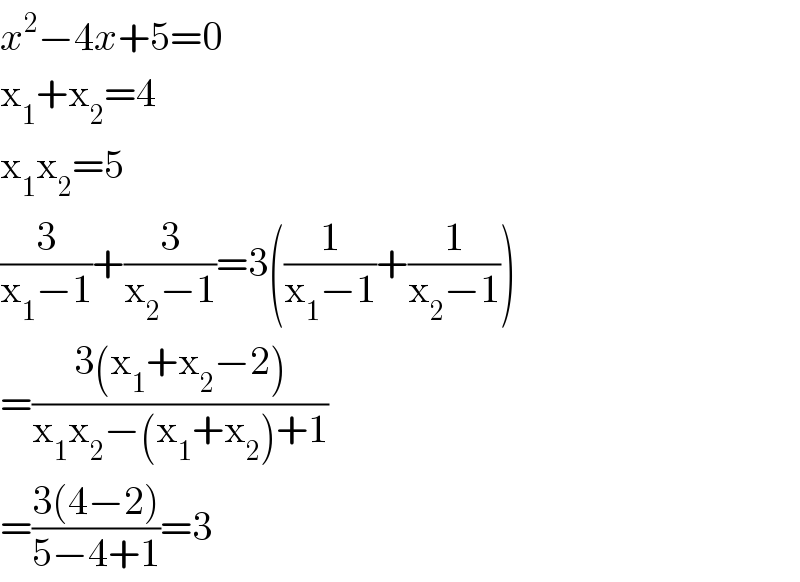Question Number 13030 by 2002154006 last updated on 11/May/17

Commented by prakash jain last updated on 12/May/17

$${x}^{\mathrm{2}} −\mathrm{4}{x}+\mathrm{5}=\mathrm{0} \\ $$$$\mathrm{x}_{\mathrm{1}} +\mathrm{x}_{\mathrm{2}} =\mathrm{4} \\ $$$$\mathrm{x}_{\mathrm{1}} \mathrm{x}_{\mathrm{2}} =\mathrm{5} \\ $$$$\frac{\mathrm{3}}{\mathrm{x}_{\mathrm{1}} −\mathrm{1}}+\frac{\mathrm{3}}{\mathrm{x}_{\mathrm{2}} −\mathrm{1}}=\mathrm{3}\left(\frac{\mathrm{1}}{\mathrm{x}_{\mathrm{1}} −\mathrm{1}}+\frac{\mathrm{1}}{\mathrm{x}_{\mathrm{2}} −\mathrm{1}}\right) \\ $$$$=\frac{\mathrm{3}\left(\mathrm{x}_{\mathrm{1}} +\mathrm{x}_{\mathrm{2}} −\mathrm{2}\right)}{\mathrm{x}_{\mathrm{1}} \mathrm{x}_{\mathrm{2}} −\left(\mathrm{x}_{\mathrm{1}} +\mathrm{x}_{\mathrm{2}} \right)+\mathrm{1}} \\ $$$$=\frac{\mathrm{3}\left(\mathrm{4}−\mathrm{2}\right)}{\mathrm{5}−\mathrm{4}+\mathrm{1}}=\mathrm{3} \\ $$
